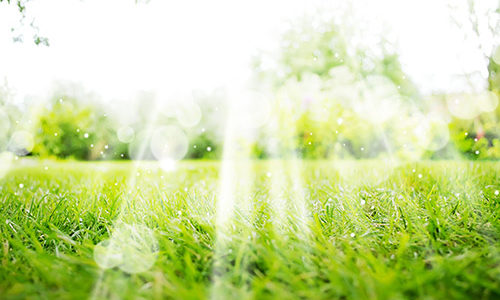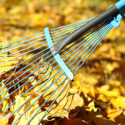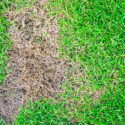Summer means warm long sunny days, and who doesn’t want that? Many of us are eternally grateful for the sunshine after six dreary months of winter. However, just as excessive sun exposure can damage unprotected skin, your lawn won’t fare well without a proper balance of sun and moisture. Droughts can leave your grass badly compromised and an unappealing brown colour.
Fortunately, there are effective strategies available to lessen the amount of damage to your lawn during a drought.
Do Nothing
Do nothing? That doesn’t sound like much of a plan, but in some cases, it’s better to sit back and wait for fall. Fall means less direct sun exposure and cooler temperatures, allowing your grass to gradually bounce back on its own. Despite what most people think, brown grass doesn’t necessarily mean dead grass. Grass can go dormant under these times of stress, only to bounce back when conditions get better.
Go Easy on Your Lawn
Your grass is already under enough strain during a dry season, so you can help it by changing your lawn activities. Raise the lawn mower to its highest setting. The longer the blade of grass, the longer the roots. Longer roots mean stronger roots and drought tolerance.
Also, make sure your mower’s blades are sharp. Dull blades are less likely to cleanly cut the grass, making it more susceptible to the extremes of the sun. Don’t fertilize or aerate during this period.
Also, try to limit the amount of foot traffic your lawn gets by moving any of your sporting activities to the local park. Don’t drive on the grass or leave any vehicles parked there.
Choose the Right Grass
If you are in an area where droughts are common, you can lessen the damage to your lawn by choosing a drought resistant type of grass. Hardier strains like Kentucky bluegrass, Bermuda grass, or Ryegrass can get by with less water (typically only ¾-½ as much) and are better able to survive prolonged periods without water when the sun is particularly merciless.
Mulch for Protection
Instead of raking up your trimmed grass, switch to a mower that mulches it. This may not look as neat and clean, but the mulched grass will help to keep the lawn cooler and prevent moisture from evaporating. This will prolong the lawn’s ability to withstand the extremes of summer. (It also adds/returns nutrients to the soil)
Choose an Alternative Groundcover
If you continue to have problems with droughts in the area, you may choose to dispense with a lawn entirely. While this might have seemed radical in your parents’ time, some homeowners are going with other types of plant life instead.
Choosing indigenous plants instead of grass helps to increase biodiversity and water conservation. These are just as attractive, often more resistant to extremes in weather, and help to make your property stand out in a positive way.
However, we certainly understand if you love your lawn and are intent on keeping it as lush and green as possible. Rest assured that the extremes of summer won’t necessarily prove fatal to your grass. The experts at Premier Tech Home & Garden are happy to answer any questions you have about lawn care and the products that will help you to maintain your lawn’s health.



